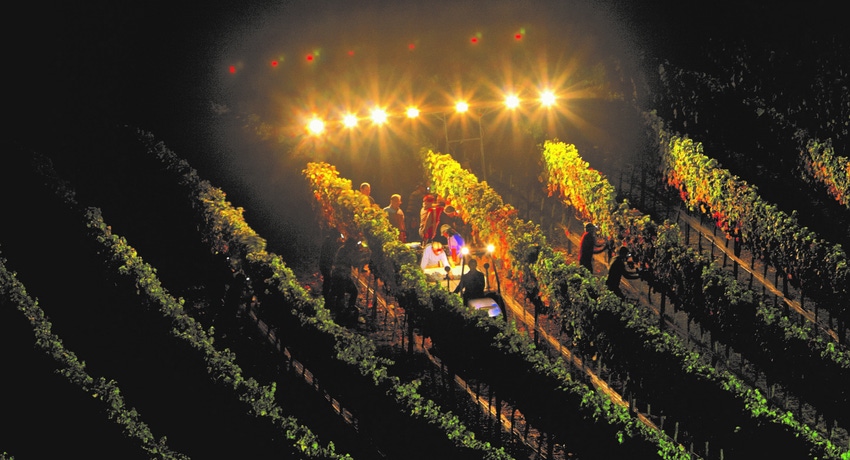September 28, 2020

California’s annual winegrape harvest is underway, and wineries across the state are humming with activity as they transform the grapes into wine.
Despite this year’s challenges, vintners are pleased with the quality of the 2020 vintage. As a tribute to this special time, Wine Institute presents eight lesser-known facts about California’s winegrape harvest.
Want to experience California wine country’s harvest? California Wines is offering free Zoom backgrounds of winegrape harvest scenes—from picking to crush. Just download the images and select a California harvest backdrop for your next Zoom session. For instructions, see Zoom’s support page.
Largest harvest
1. California harvest: largest in the U.S. California produces more than 80 percent of U.S. wine and is the world’s fourth-largest producer. More than 90 percent of all California wine is produced in a Certified California Sustainable winery.
2. Seeds hold the clues. Along with measuring the fruit’s sugar, acidity and pH levels, California winemakers continually taste the grapes—making sure to chew the seeds—in the days leading up to harvest. That’s because as grapes mature, their seeds turn brown and become less bitter. By chewing the seeds, winemakers can tell when the grapes have reached perfect ripeness.
3. Sparkling wines go first. Harvesting early—typically in late July or early August—helps the state’s wineries maintain refreshing acidity in their sparkling wines. While just about any grape variety can be used to make sparkling wine, Pinot Noir and Chardonnay are the most common choices.
4. The grapes come in after dark. Wineries typically harvest between midnight and early morning because the cooler nighttime temperatures help concentrate and preserve the fresh fruit aromas and flavors and stabilize sugar levels. Night harvesting also saves energy in the winery because it eliminates the need to cool down the grapes after they have been picked, and it provides more comfortable working conditions for vineyard crews.
Help from falcons
5. Falcons help at harvest time. As part of their sustainable farming practices, many California vintners recruit trained raptors to scare away flocks of starlings and other birds that swoop in to eat ripe winegrapes hanging on the vines.
6. Chardonnay and Cabernet Sauvignon: state’s top grapes. Chardonnay is the number grape by tons harvested in California, followed by Cabernet Sauvignon.
7. 118+ grape varieties harvested. The state’s diverse climate and soils provide a hospitable home for dozens of winegrape varieties from Albariño to Zinfandel.
8. One ton of grapes = 63 cases. On average, one ton of winegrapes produces about 63 cases of wine, or 756 (750 ml) bottles.
Source: Wine Institute, which is solely responsible for the information provided and is wholly owned by the source. Informa Business Media and all its subsidiaries are not responsible for any of the content contained in this information asset.
You May Also Like




